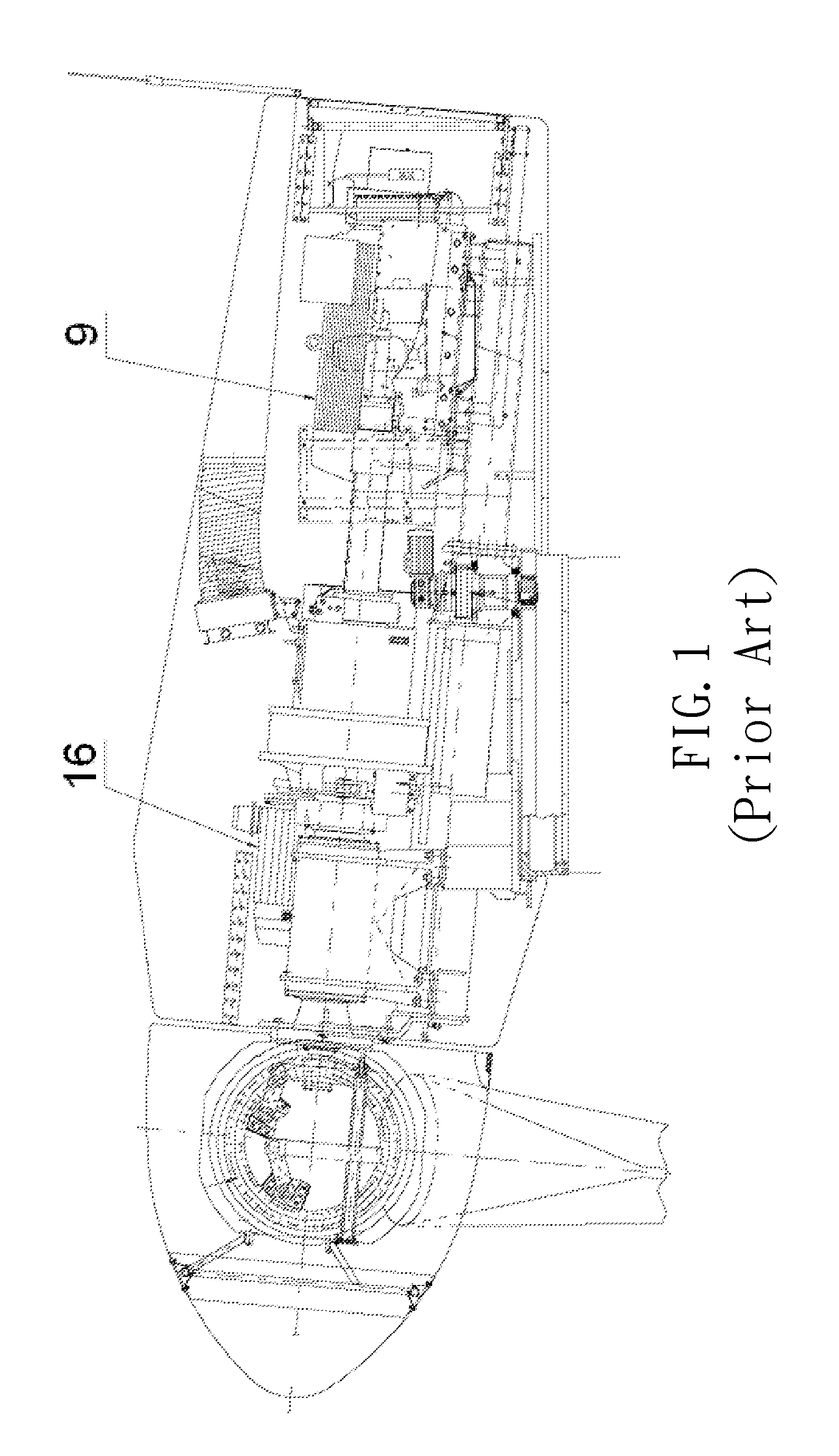Hybrid power-generating device
a power-generating device and hybrid technology, applied in the direction of motors, wind energy generation, electrical apparatus, etc., to achieve the effects of reducing operating costs, enhancing the driving effect of apparatuses, and improving stability of power grids
- Summary
- Abstract
- Description
- Claims
- Application Information
AI Technical Summary
Benefits of technology
Problems solved by technology
Method used
Image
Examples
Embodiment Construction
[0036]For your esteemed members of reviewing committee to further understand and recognize the fulfilled functions and structural characteristics of the invention, several preferable embodiments cooperating with detailed description are presented as the follows.
[0037]Please refer to FIG. 6, which shows a hybrid power-generating device 10 with a hybrid power generator 20 according to a preferred embodiment of the invention. The hybrid power generator 20, being driven by a prime mover, is comprised of a primary electrical generator 21 and an auxiliary electrical generator 22, in which the auxiliary electrical generator 22 is coupled to the primary electrical generator 21 while rendering the rated power of the auxiliary electrical generator 22 to be smaller than that of the primary electrical generator 21. As seen in FIG. 6, the prime mover is an impeller or rotor 30 having a plurality of blades 31, in which the plural blades 31 is electrically connected to a pitch drive system, used f...
PUM
 Login to View More
Login to View More Abstract
Description
Claims
Application Information
 Login to View More
Login to View More - R&D
- Intellectual Property
- Life Sciences
- Materials
- Tech Scout
- Unparalleled Data Quality
- Higher Quality Content
- 60% Fewer Hallucinations
Browse by: Latest US Patents, China's latest patents, Technical Efficacy Thesaurus, Application Domain, Technology Topic, Popular Technical Reports.
© 2025 PatSnap. All rights reserved.Legal|Privacy policy|Modern Slavery Act Transparency Statement|Sitemap|About US| Contact US: help@patsnap.com



